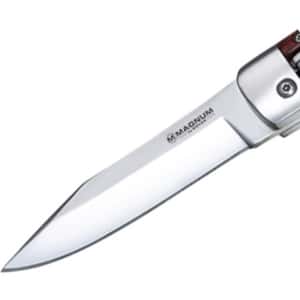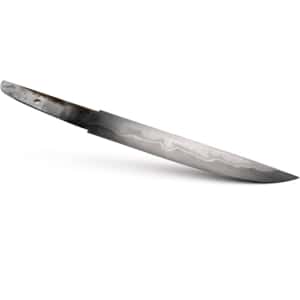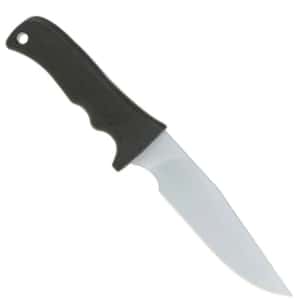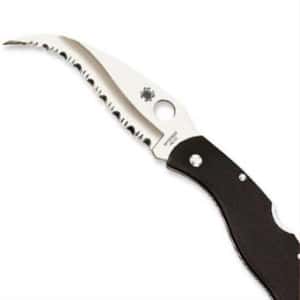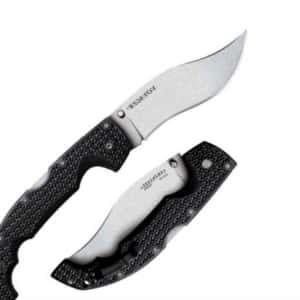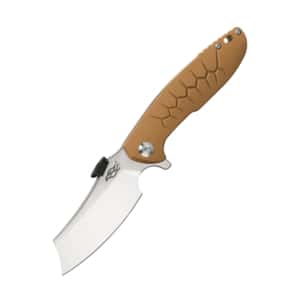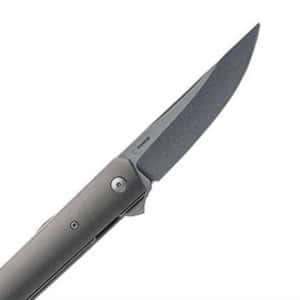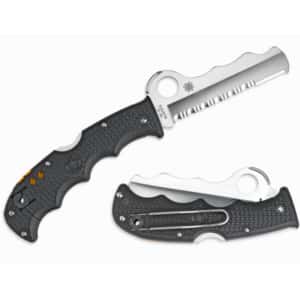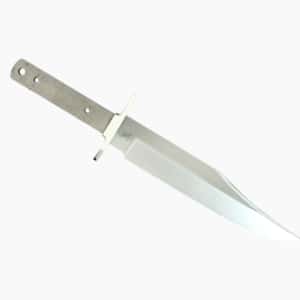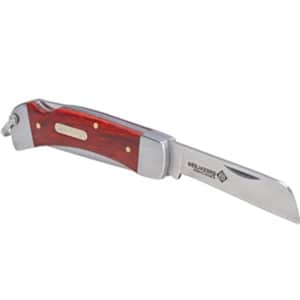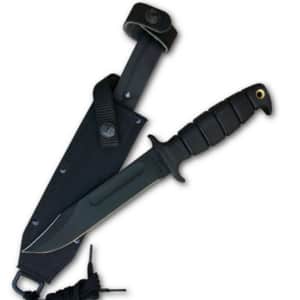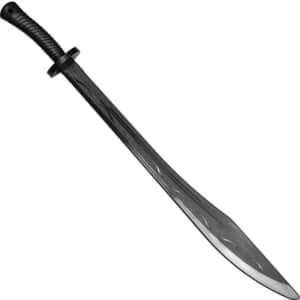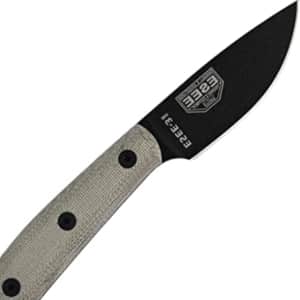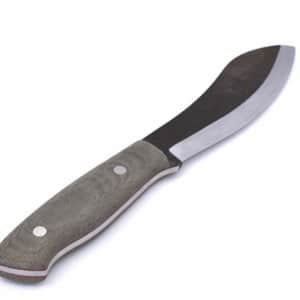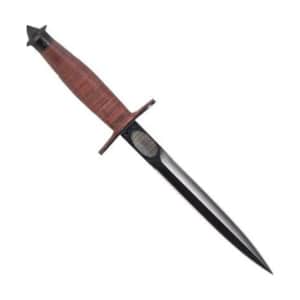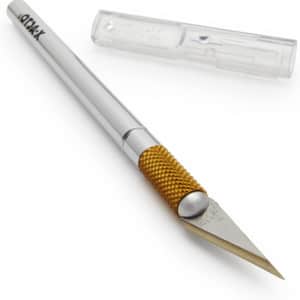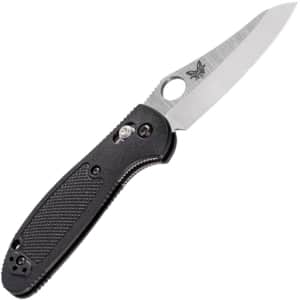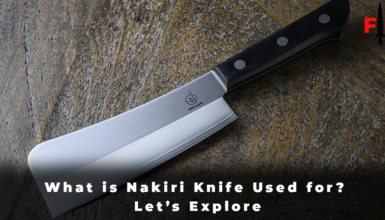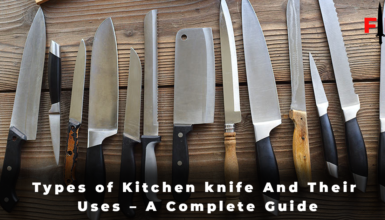There are many types of blades that people might not know, and the shape and type of blade play an important role in how it works with you, even if you are a professional butcher or a housewife. There are some specific types for certain types of works, and if you use them in different kinds of works, they can’t work efficiently.
Most common people do not realize that their knife blades can be different, and they have different types for different kinds of tasks. Here we have brought the top 20 types of knife blades you can use in your daily life tasks and make your life more efficient.
After reading this article, you might know that there are different types and shapes of knife blades, and you will be able to get the perfect one for yourself according to your needs.
If you know nothing about the types and shapes of the blades, then you might feel confused, but we promise you that after the end of this article, you will be able to find the perfect shape of knife for yourself, which will make your words more efficient.
Table of Contents
Types of blades
- Drop Point
- Tanto
- Reverse Tanto
- Clip Point
- S Curve
- Reverse S Curve
- Trailing Point (AKA Skinner, Upward Curve, or Upswept)
- Straight Back (AKA Standard or Normal)
- Assist Blade
- Bowie
- Coping
- Dagger
- Dao Blade
- Kukri
- Leaf (Spyderco)
- Modified Blades
- Nessmuk
- Needle Point (AKA Stiletto)
- Pen Blade
- Sheepfoot
1: Drop Point- Versatile knife
There’s no doubt that the drop-point is today’s most popular blade shape, thanks to its simplicity and versatility. This blade has a gradual slant to the spine to ensure it centers the point on the axis. As the blade ascends to the point, the belly begins somewhat flat, but it slopes down gradually as well.
Almost anything can be done with drop-points. Pocket knives like these are most commonly used for EDC, but they’re also used for many other purposes as well. Since the spine isn’t usually sharpened, the blade is typically extra thick, increasing its strength and making thrusting and stabbing quite effective, cutting, slashing, and sawing all possible with the long, gradually upward sloping belly.
Designers often use the drop-point to highlight serrated or partially serrated blades, while others add features along the spine, such as sawteeth or short serrated segments. Almost anyone can find a knife with a drop-point blade that suits their needs.
Cons
This is one of the best and versatile types of blades that is why there is no big cons of this type, but we can say that when it comes to fighting and self-defense knives, then we would prefer to go for some other instead of this type of knife because they are more efficient. Tanto blade types are a good option for self-defense and combat situations.
There are many tight places where these drop point types work great, but that does not mean that you should buy this only for the tight places because there are multiple other uses of this type of knife.
| Shape Statistics | Comments |
|---|---|
| Popular | Yes |
| Versatile | Yes |
| Good for users | Yes |
| Self-defense/Combat | No |
| Tactical use | No |
2: Tanto – Good for Combats
In the Western world, especially in the United States, the Tanto blade is very popular due to its powerful combat effectiveness and deadly looks. Due to the geometry under the point, the point is particularly strong, making the Tanto one of the best penetration blades despite its user-friendliness.
The points of these words are so powerful that a well-made knife of any size can cut through body armor relatively easily. Although it’s not great, if you’re looking for an aggressive design and intend to carry a self-defense blade, the Tanto might just work for you.
Tanto blades aren’t very useful in normal day-to-day use because they have a flat cutting edge and no curved belly, giving the total blade area a much smaller area than an equal-length drop-point blade.
Despite the strong point and the famous flat-faced cutting edge found on the bottom near the tip, the US version of the Tanto came much later than the Japanese version.
A slight curve over the cutting edge of the Japanese version makes it more versatile and better at piercing than the US versions. This is not a very versatile shape of the blade, and it is mainly used for self-defense and combat uses; some cool dudes carry these blades because of their look, which is very attractive.
Cons
There are not many drawbacks of this knife, but the only problem with this knife is that they are fixed for combat and self-defense and not versatile compared to the drop point blades.
| Shape Statistics | Comments |
|---|---|
| Popular | No |
| Versatile | No |
| Good for users | Not great, but okay |
| Self-defense/Combat | Yes |
| Tactical use | Yes |
3: Reverse Tanto – Easy to Carry
This style is trendy among devotees of premium EDC gear designed by Warren Osborne of Benchmade. While it may seem odd at first, some reverse Tantos may be different from his designs, for example, the blade of Bob Dozier, who took a drop-point shape and curved the belly but had a roughly angled spine.
The only real difference between reverse Tanto blades and regular Tanto blades is the sharp drop-off at the point, usually flat but angled. Due to the overall thinness of the blade tip, it can fit more easily through tight spaces.
A Dozier design has a lower point than a spearpoint, possibly resulting in better tip control by sacrificing some belly length. It seems to me that these knives are designed primarily for show.
Reverse Tanto blades come in both short and long versions, and with the spine removed near the tip, these blades can be maneuvered with pinpoint accuracy through touch or thick material.
Cons
Compared to a traditional drop-point, the tip of this blade will not be nearly as rigid and robust, making it less versatile and less tough. The overall experience becomes thinner and more controllable as the tip weakens.
| Shape Statistics | Comments |
|---|---|
| Popular | No |
| Versatile | Yes |
| Good for users | Yes |
| Self-defense/Combat | Yes |
| Tactical use | Not great, but okay |
4: Clip Point – Versatile knife
This blade type is extremely common and well-known because it is simple, versatile, and has a rich tradition. Originally designed as Bowie knives, the clip point style blade has a long, flat cutting surface with a belly jutting out and a point that juts upward for a smooth edge.
Blades with clip-points typically have an unsharpened spine that, like the belly of the knife, appears straight and flat, but as it approaches the tip, it immediately curves into a convex shape as if it had been cut with nail clippers.
In modern clip point designs, the convex curve would appear to be inverted, creating a straight portion of the curve that looks almost like a reversal of the convex curve.
Manufacturers also make these knives with a sharpened clip-point on the belly and a curved spine, making them useful for cutting rope, wire, and fishing lines.
Although clip-point blades are known for their combat uses, they are so versatile that they are suited for almost any occasion. The versatility of this blade also makes it ideal for bushcraft and whittling. It is common to find these types of blades as they are easy to use and versatile, and you can get this shape of the knife very easily.
Cons
Many people might want to use the tactical knife, but this is not an excellent tactical knife that is the con of this type of blade.
| Shape Statistics | Comments |
|---|---|
| Popular | Yes |
| Versatile | Yes |
| Good for users | Yes |
| Self-defense/Combat | Yes |
| Tactical use | No |
5: S Curve – Good for slashing
S curves are easier to identify when the point of the blade is facing upwards than the reverse S curve. In addition to creating a wide belly that is ideal for slashing, this shape lacks the versatility and user-friendliness of its more-traditional counterparts.
It’s possible that some people would use this for self-defense due to the excellent slashing effect. However, it’s more of a blade shape for those looking for something unusual and appealing.
Most of the time, these knives are very good for the pocket size knives that are mostly used for self-defense, or some adventures use these knives for cutting ropes or sticks of wood.
Cons
It is neither user-friendly nor versatile. It sometimes appears that the blade has a much shorter blade performance due to this blade shape. These blades are limited to some self-defense purposes or some small tasks, but it is impossible if you plan to cut the meat or fish with it.
| Shape Statistics | Comments |
|---|---|
| Popular | No |
| Versatile | No |
| Good for users | No |
| Self-defense/Combat | Not great, but okay |
| Tactical use | Not great, but okay |
6: Reverse S Curve – Deep slashing
The Reverse S and S curves aren’t very common knife shapes to find, but you’ll recognize them instantly. If you see the Reverse S version, you’ll notice a traditional “S” shape with the point of the knife facing downward. Neither S-style blade is user-friendly or versatile. It is mainly designed to allow more cutting surfaces to be added to curved objects and produce thin and shallow slices.
The reverse S blade applies the deepest slash possible while pulling the blade’s belly further into the target, which causes considerably more damage without applying forward motion directly to the cutting action.
A Reverse S knife gives you the best of both worlds. It has the features of a Hawkbill knife at the end and the advantages of a Hawkbill knife further down, as well as an edge that otherwise wouldn’t be present on a Hawkbill knife. Hawksbill specializes in cutting curves or similar attributes of objects.
Cons
It is simply not easy to use, nor is it as friendly as a blade shape with a more traditional shape, so professionals primarily use these knives. If you are a beginner or entry-level user, you should avoid this knife because you might injure yourself.
| Shape Statistics | Comments |
|---|---|
| Popular | No |
| Versatile | No |
| Good for users | No |
| Self-defense/Combat | Not great, but okay |
| Tactical use | Not great, but okay |
7: Trailing Point (AKA Skinner, Upward Curve, or Upswept) – Good for skinning and slicing
In contrast, the trailing point uses a belly upswept to create an excellent surface for cutting. It’s particularly useful for skinning and slicing because of the long cutting edge that is made possible by its short length. In addition to being famous for cooking, these are also used for cleaning fish or field dressing after hunting. Blades with a trailing point are also known as filet knives.
Generally speaking, flattening, preparing food, and general use. It delivers exceptional cutting length along its upswept belly and is a highly versatile utility blade. There isn’t much strength in the point, but that’s the tradeoff of having a genuinely long cutting edge that we can use easily.
Cons
This is a very small and thin knife so, the only problem with this is a very small blade so; this is not a good tool for cutting the big pieces of the meat, which is the con of this shape of the knife.
| Shape Statistics | Comments |
|---|---|
| Popular | Yes |
| Versatile | No |
| Good for users | Yes |
| Self-defense/Combat | No |
| Tactical use | No |
8: Straight Back (AKA Standard or Normal) – Versatile
Blade shapes with straight backs are very common and straightforward. The spine is straight from the handle to the tip, and the belly is mostly flat until it curves up to the tip, as the name suggests. When a straight back is applied, the top of the handle will always be level with the top of the back. Blades of this shape are versatile and can be used across various uses, rivaling drop-points in versatility.
Straight back blades can be grabbed because they can be firmly pressed on the spine with your hand. Additionally, these blades can be made thick, tough, and heavy, providing enough power to chop through dense foliage as well as chop wood. The straight-back blade can also be used for self-defense applications.
Cons
When you force the belly to meet the tip at the top of the spine, you lose some of the cutting edges the belly offers compared to the superbly versatile drop-point.
This blade shape is not for cutting meats, but you can do simple other cutting tasks with this small blade straight back.
| Shape Statistics | Comments |
|---|---|
| Popular | Yes |
| Versatile | Yes |
| Good for users | Yes |
| Self-defense/Combat | Yes |
| Tactical use | Yes |
9: Assist Blade – For professional seatbelts
Assist blades are notorious for their blunt tip, preventing them from penetrating. It is convenient to have these blades when you’re fishing or cutting ropes, seatbelts, clothing, etc. since you can cut effectively while preventing accidental stabbing.
If some commercial fishermen use this shape of the blade, this is also called the emergency knife because these shapes knives are usually found on the seat belts, so if you are stuck, you can cut the seat belt.
Cons
This knife is not like all other knives in the market that are very sharp and ready to penetrate, but this shape has a very blunt tip that cannot penetrate the human body.
These are not very common shapes of knives, and you might not get this type of knife from all brands, but some specific brands make these kinds of knives, and in those brands, Spyderco is one of the best brands.
| Shape Statistics | Comments |
|---|---|
| Popular | No |
| Versatile | No |
| Good for users | Yes |
| Self-defense/Combat | No |
| Tactical use | No |
10: Bowie – Combat knife
Jim Bowie first became known and popular with one of his knives in the 19th century, during the Sandbar Fight Duel, when he pleaded with a renowned blacksmith (James Black) for a clip-point blade with an eye guard for protection. Despite their long history in combat, these blades also have many other uses.
Bowie-style knives are popular with outdoor enthusiasts for cutting through dense foliage and as a large camp knife. There is a long history of more than 150 years so, find out more about the history and heritage of the Bowie knife here.
You might be thinking about what are the common uses of this bowie knife; there are many uses of the bowie knife. Camp and hiking are becoming more popular nowadays rather than combat.
Anywhere where a large, sharp piece of steel would need to be hacked and swung would be ideal for the Bowie knife.
Cons
These are not the knives you would carry with you wherever you are going because there design and size, which is the first con of this blade; and on the other hand, this blade is very heavy, and the hikers and adventurers need the knives that are very small and lightweight which makes this knife not good for them too.
| Shape Statistics | Comments |
|---|---|
| Popular | Yes |
| Versatile | Not great, but okay |
| Good for users | No |
| Self-defense/Combat | Yes |
| Tactical use | No |
11: Coping – EDC
The coping blade is impossible similar to Sheepfoot blades, except they don’t have a flat point or rounded edges. Instead, they have a downward sloped angle from the spine up to the tip. However, the cutting edge on a coping blade is still flat from tip to grip, and the blade is used in a lot of the same ways as a Wharncliffe or Sheepfoot blade.
This is another very easy-to-carry blade that you can carry with you wherever you are going. Most of the time, the knives with these blades come in a foldable design which is the best design for the pocket size design and makes it very easy to carry.
This blade does not have the tip like all other knives used for cutting the meat and other stuff, but it has a very flat tip which is very beneficial in cutting the clothes, carpets, and other stuff like this for you.
Cons
The first con is that it is not a versatile knife like some others in the market, and on the other hand, the tip of the blade is very flat that it can’t cut or penetrate, which makes the use of this knife very limited to the cutting of clothes and carpets.
| Shape Statistics | Comments |
|---|---|
| Popular | No |
| Versatile | No |
| Good for users | No |
| Self-defense/Combat | No |
| Tactical use | No |
12: Dagger – Combat blade
A dagger resembles a spear-point blade that is longer and thicker than the Stiletto design with a cross-guard and much longer. Daggers are essentially two-edged blades with a long and heavy point that makes for a very deadly blow. They are designed to strike with the greatest amount of force possible.
Daggers are often mistakenly referred to as knives that appear to be the same shape and size but have one side not sharpened. Similarly, knife laws include this requirement; therefore, if one edge of your blade is not sharpened, you will not be eligible for the dagger law.
Technically, thrusting knives are blades with only one edge and the same form as daggers. Rather than relying on sharp edges, thrust knives make use of the point and gain more rigidity by avoiding sharp edges.
You would see these kinds of blades in some uncle’s house who might be from the army because these days these knives are mainly purchased for decoration pieces, but their original use is for combat and self-defense, which is not needed nowadays.
Cons
These are the long and heavy knives that are illegal to carry with you, and if you are caught having the dagger, you might face some serious consequences that would not be good for you. The other con is that they are not a very good knife for the users because these are designed for combat so, you might injure yourself.
| Shape Statistics | Comments |
|---|---|
| Popular | Yes |
| Versatile | No |
| Good for users | No |
| Self-defense/Combat | Yes |
| Tactical use | Yes |
13: Dao Blade – Chinese sword
The Chinese have traditionally used Dao blades exclusively as single-edged short and long swords. Blade shapes of this type are flat and long with flared belly and a point that is thick at the end near the blade’s point. The tip is shaped like a drop point to the belly side with a gradual upward curve to the tip.
When you swing the sword, you see that the spine curves upward and then rounded out into the tip, giving the sword’s end a substantial boost in weight and momentum. These blades are not EDC compatible as they were created, although some manufacturers changed them to make them easier to use.
If you are looking for a pocket-sized knife in this blade, then there are very limited manufacturers and very limited design available, but If you do get a long blade on an EDC or pocket knife, it would be great for cutting through dense vegetation.
Some people might want to know where these doa blades are used so, traditionally these were used in the Chinese swords, but now they are just used as decoration pieces. Many people pronounce the name of this blade wrong; its name is pronounced Tao with T and written with D.
Cons
There is only one con of this blade, and that is it is heavier from its ti which makes it hard to swing in the air, but these blades are now just used for the decoration pieces so, this does not count an on but if you are interested in purchasing knife of this blade than you have to consider this problem.
| Shape Statistics | Comments |
|---|---|
| Popular | No |
| Versatile | No |
| Good for users | No |
| Self-defense/Combat | Yes |
| Tactical use | No |
14: Kukri – Nepalese Combat blade
We in the West may be slightly surprised at the shape of this blade, but in the East, they are pretty common, as the Nepalese created these for farming and then later used by armies in Asia as combat weapons. We can also say that these are the swords of the Nepalese Army.
However, you can still use them for chopping through thick branches or for some farming applications since the Kurki blade is more of a novelty than that many people use regularly. Certainly, the large Kukri would make an excellent home-based self-defense weapon. If you have this in your hand, the opponent will not even dare to come closer.
They look like boomerangs with a handle attached to them. Blades have a distinct groove near the belly, spines curving downwards towards the tip in a similar location to the belly curves.
The everyday use of this knife was for the combat fight; as we told you before, this is an important tool of the Nepalese army, but on the other hand, this tool is also very effective for farming, hunting, and bushwacking.
Cons
This is not from those knives that you carry daily with you wherever you are going because basically, they are very long and used as combat knives, and they are heavier too. Then the other con is that not everybody can use this knife; if you are planning to use this knife, you have to spend some time on it and know how you can use it.
| Shape Statistics | Comments |
|---|---|
| Popular | No |
| Versatile | No |
| Good for users | No |
| Self-defense/Combat | Not great but okay |
| Tactical use | No |
15: Leaf (Spyderco) – EDC
Leaf-style blades are spear points on steroids. Their spine edge has become fat, and they have lost their edge. There is an aggressive curve on the spine toward the point, whereas the belly has a more gentle curve. This is designed by Spyderco and is used on many of their knives. Their blade designs stand out, and many of their knives are unique because of their blade design.
It offers the user a great deal of versatility like the drop-point and is useful for many things. However, it is not particularly good at anything except providing a good EDC that is easy to use across many different applications while being extremely versatile. This is among the best pocket-size knives in the market.
This is a very small knife used by the adventures and hikers who love to camp on the mountains because they need a knife to cut the ropes, sticks, and other stuff so, this is a very small knife it is straightforward to carry with you. This is also a good self-defense tool for the people because of its size; you can easily take it out and defend yourself from the goon.
Cons
These knives are very versatile and can be used for different tasks, but they are not the first choice for all other tasks, and if you don’t have any other blade for the task and you need the one which is very easy to carry, then you should go with this knife.
| Shape Statistics | Comments |
|---|---|
| Popular | No |
| Versatile | Yes |
| Good for users | Yes |
| Self-defense/Combat | Yes |
| Tactical use | No |
16: Modified Knife Blades
It isn’t a shape in its own right, but seeing the label “modified so and so” is becoming more common among knife designers as they seek to distinguish their blades from others. A modified blade is simply a blade modeled after another blade and modified in a way that no longer fits the category to which it belonged.
There are some knives with blades that are drop-point style, but they have blades with a spline curve that is more aggressive than you would normally expect to see on a blade with that shape. Assist, Trailing, Drop, Clip, Tanto, Sheepsfoot, and many more modified blade types.
Blades are usually purpose-built for a specific task where they excel with slightly different characteristics than the most popular blade shapes. They are just improved versions of existing blades with some flair to stand out and improve the design.
Cons
The cons of this blade depend on the shape of the blade from which your knife is modified. We can’t determine the cons of the blade without knowing the shape of the blade.
| Shape Statistics | Comments |
|---|---|
| Popular | No |
| Versatile | Depends on the shape of the blade |
| Good for users | Depends on the shape of the blade |
| Self-defense/Combat | Depends on the shape of the blade |
| Tactical use | Depends on the shape of the blade |
17: Nessmuk – Good for Slicing
It still isn’t entirely known where the Nessmuk blade came from, but it has been praised for its excellent cutting power and food preparation abilities worldwide. An explorer and traveler named George Washington Sears requested the shape for his use in the mid-1800s, and since he was known for traveling and exploring, other people adopted the knife shape he had developed.
It is distinctly different but resembles a trailing or skinning style blade. While the belly of the blade swoops upward as you would expect, the spine has a distinctive shape. In the center of the knife’s spine, a sizeable upward bump makes slicing thick and heavy materials simpler, at least I believe so since it adds weight.
This is also one of the versatile knives used in many things; it is a perfect knife for food preparations, and if you are a traveler, you can also use this for bushwacking and rope cutting. But if we have to choose one use, it is very good for the slicing of the meat.
Cons
If we look at the weight of this knife, it is heavier than the other common knives in the market, which in our view is a con that might make the slicing process hard for you, but that might also be very useful for your use. But one thing is sure these knives are not very common, and if you are planning to buy this, some limited brands manufacture these kinds of blades.
| Shape Statistics | Comments |
|---|---|
| Popular | No |
| Versatile | No |
| Good for users | No |
| Self-defense/Combat | No |
| Tactical use | No |
18: Needle Point (AKA Stilleto) – Good for combat
The dagger family technically includes these, but they are usually smaller and less complex than most people consider suitable for the technical dagger. As the name implies, needle-point blades feature the same appearance as their namesake – a sharp, needle-like point and a long, slim blade with double edges.
This form factor’s low surface friction point is almost exclusively used for thrusting and stabbing and therefore is primarily used for combat or self-defense. Despite its relatively small size, this knife is not suitable for daily carry, camping, hunting, etc. Moreover, it is difficult to use, and when cutting or sawing thick materials, it is difficult to handle the tool.
Additionally, since the edges of these blades are sharpened, and the spine is thin, the blade lacks tensile strength. It is possible to find one edge or even both edges of the blade unsharpened. Thrusting blades are technically called needle knives, but you may also see them mislabeled as stiletto knives or needle knives.
In the 15th century, the Stiletto blade was designed in Italy, but it is unclear if other civilizations used shortened double-edged blades before that period, so we cannot conclude that Italian designers created the first shortened daggers. Switchblades are also commonly referred to as switchblades and are therefore illegal in many countries around the world.
These are used for self-defense, but nowadays, they are used to decorate houses.
Cons
These blades are not versatile, and you can only use them for self-defense and combat purposes. They are the same as the daggers, which are also used for combat and self-defense purposes.
| Shape Statistics | Comments |
|---|---|
| Popular | No |
| Versatile | No |
| Good for users | No |
| Self-defense/Combat | Yes |
| Tactical use | No |
19: Pen Blade – Easy to Use
If you love the styling of Tanto blades, why would you give up their versatility of drop-points? We’ll blend them now, so fear not! Generally, Spanto curves are harsher than drop-point curves but still curves nonetheless, as opposed to Tanto curves, which meet the point after a flat and harsh upward slope.
However, you get a much more comfortable belly space for cutting and sawing while still getting an extremely sharp and tight point at the end. Combining the drop-point and Tanto allows you to make the already quite versatile drop-point slightly more deadly by making the tip of the point more tightly wound and by having lower friction upon penetration.
These knives have been designed for those who want a more aggressive style with the same versatility as drop-point knives. I think these look awesome, and they have the potential to be very deadly if they’re used properly.
Cons
There is more surface friction in the tip than the flat thin surface of the belly, so these aren’t as deadly as Tantos, but they are safer and more versatile than drop-points. This is because they aren’t tapered drastically, so skinning isn’t optimum.
| Shape Statistics | Comments |
|---|---|
| Popular | Yes |
| Versatile | Yes |
| Good for users | No |
| Self-defense/Combat | No |
| Tactical use | No |
20: Sheepfoot – Very Popular
As a term, “Pen Blade” is designed to describe any extremely small knife. In general, pens have very thin blades, and small blades look like tiny knives, scalpels, or trailing knives with a drop-point tip. A penknife is not technically similar to a pen that you would use for writing.
It is suitable for small EDCs or thinning thin fabrics. Historically, pen knives were used for sharpening pencils and repairing quills. This is a very small blade, so travelers and other adventurous people will use it to cut the ropes and collect some sticks, but they are very thin, so you can’t expect some heavy tasks.
Cons
Due to their size, pen blades often lack enough strength or usable cutting surface to be highly effective. It is often claimed that multi-tools incorporate pen blades, so one could argue that a tool that includes a pen blade is a very useful, versatile tool. However, just a pen blade lacks a lot of everyday versatility as it is so compact.
| Shape Statistics | Comments |
|---|---|
| Popular | Yes |
| Versatile | Yes |
| Good for users | No |
| Self-defense/Combat | No |
| Tactical use | No |
What is the best type of knife blade?
There are many types of blades that are used in different knives, and you can perform the different tasks with them but if you want to know the best type then we will mention the best 10 below:
- Drop Point
- Tanto
- Reverse Tanto
- Clip Point
- S Curve
- Reverse S Curve
- Trailing Point (AKA Skinner, Upward Curve, or Upswept)
- Straight Back (AKA Standard or Normal)
- Assist Blade
- Bowie
These are the top 10 types of blade knives.
Verdict
These are the 20 types of blades that you can get from the market, and some types are used for specific tasks while others are versatile, which can be used for multiple things. It depends on you what you want and what tasks you are planning to do with your knife.
These types are made of different kinds of steel, but if we talk about the best ones, they are made of carbon steel, so they are very sharp, strong, and can perform their tasks very efficiently. Hope you might now find all the information related to the types of knives.
But still, if you have any questions related to knives or any other things related to knives, don’t hesitate to ask us in the comments section below, and we will make sure that we will reply to your question asap.
Thank you for reading.
FAQ’s


